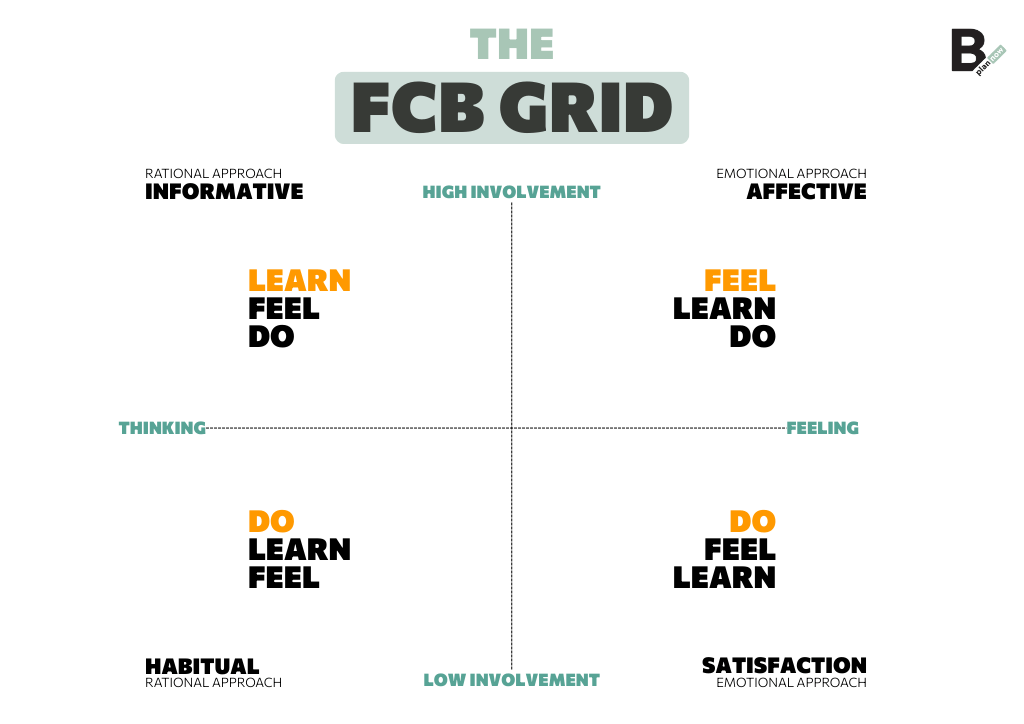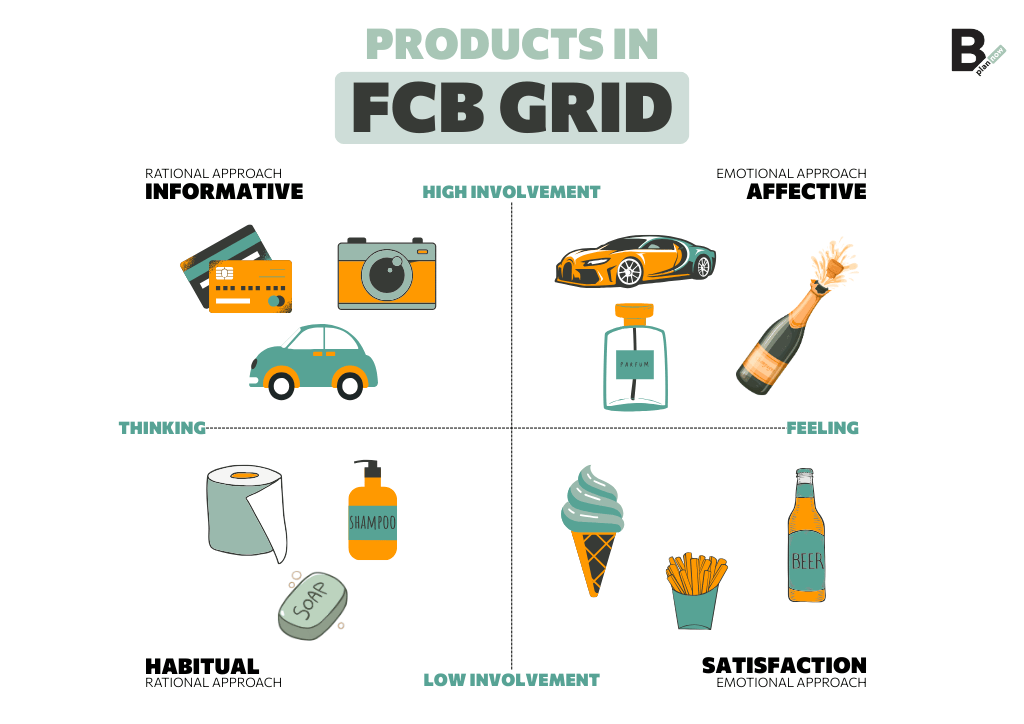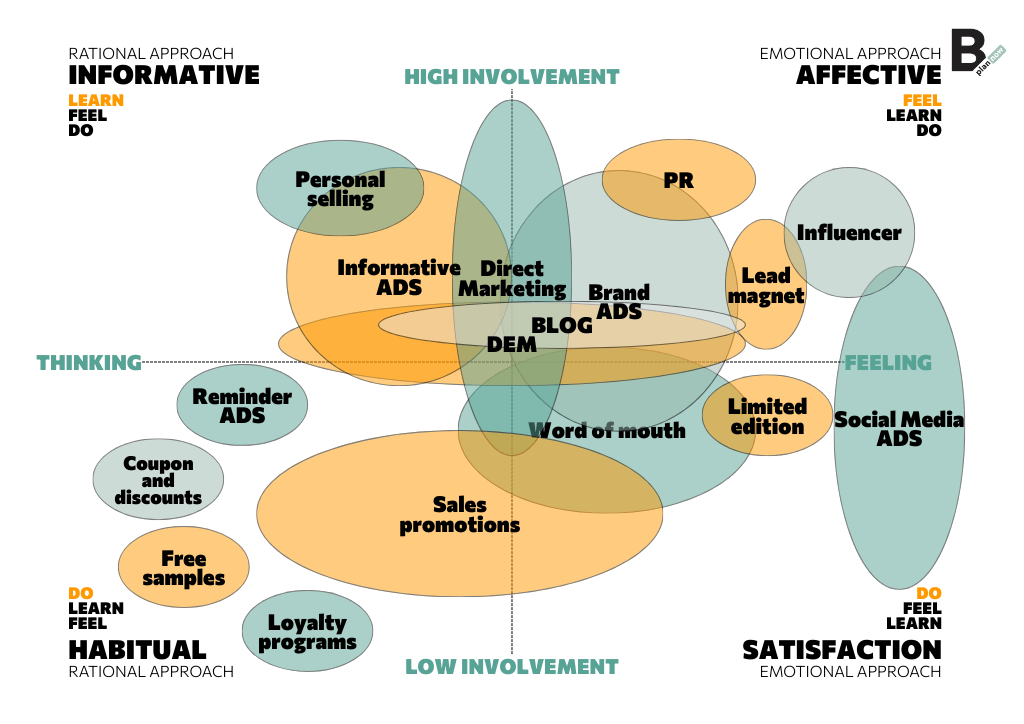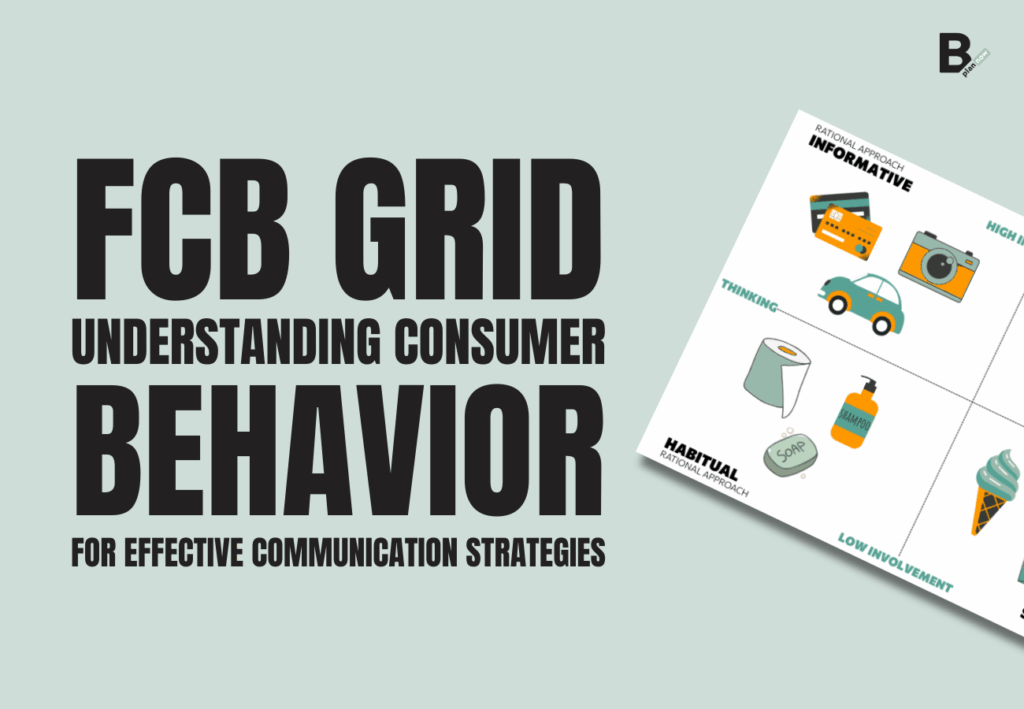The FCB Grid is a tool that can help you understand consumer behavior and, based on that, develop more effective communication strategies for your startup focused on engagement and motivation.
Many entrepreneurs and startuppers underestimate its importance, but don’t make the same mistake as them and always keep Zig Ziglar‘s teaching in mind:
“People don’t buy for logical reasons. They buy for emotional reasons.”
If you want to learn more about the FCB Grid, sit back and read the next few lines carefully. You will find a detailed explanation of what the FCB Grid is and how to apply it in communication strategies, as well as some practical examples of the application of this particular tool and a focus on the benefits it offers to startups.
What is the FCB grid (or Vaughn matrix)?
The FCB grid is a communication model devised in 1980 by Richard Vaughn (which is why it is also known as Vaughn’s matrix) for the purpose of better interpreting consumer behavior within the customer journey and the implications associated with it and, consequently, identifying more effective communication strategies.
Vaughn, at the time, was the vice president of Foote, Cone and Belding (hence the name FCB Grid), an advertising agency founded in Chicago in 1873 and still among the best known and most important in the world.
Grid structure: involvement and motivation
The grid devised by Richard Vaughn is built on two axes: the vertical one represents the level of consumer engagement (divided into high and low) while the horizontal one refers to the type of approach, which can be rational or emotional. Each of the four quadrants thus identified suggests a different marketing strategy.

Before we learn more about the quadrants of the FCB grid, it should be pointed out that involvement here means the measure of consumer interest in the promoted product or service, but also the commitment required to purchase it. You should also know that such involvement, in general, tends to be higher for innovative and expensive products or small treats.
Perception is based on the sense of utility found. Related to it are rationality and emotionality, which are headed by the functions of the brain most involved in the buying process (left for rationality and right for emotionality).
There is another aspect to consider: in 1987 Rossiter and Percy came up with a variant, which is precisely named the Rossiter Percy variant. Here, on the x-axis, the type of approach is divided into functional (this is where products are placed that operate in a “negative” manner, i.e., with the goal of eliminating a problem) and transformational (where products are placed that operate in a “positive” manner, i.e., aiming to improve a situation and/or gratify the person).
It is not yet time to discover the four quadrants of the FCB grid. First, in fact, you need to know that the process of convincing the consumer is based on the ordered combination of 3 actions:
- Learn: advertising provides information
- Feel: advertising effects feelings and attitudes
- Do: advertising stimulates a behavior.
The four quadrants of the FCB grid
This is it: this is the time when you are about to find out what types of products fall into the four quadrants of the FCB Grid.
First quadrant: high involvement and rational approach
In the first quadrant (high involvement and rational approach) are products, generally expensive (whose purchase is thus influenced by economic evaluations), that are very important to the consumer.
The decision whether or not to purchase these products requires a lot of thinking.
Second quadrant: high involvement and emotional approach
On the other hand, those products that, while still tending to be expensive, have an emotional component that outweighs the rational one are placed in the second quadrant (high involvement and emotional approach).
The decision whether to buy them or not, in this case, is mostly related to the consumer’s self-esteem.
Third quadrant: low involvement and rational approach
The third quadrant (low involvement and rational approach) is where essential products that are routinely used every day fall.
Although, initially, such products are purchased on the basis of perceived differences in features and benefits, their purchase then becomes a matter of habit and routine.
Fourth quadrant: low involvement and emotional approach
Finally, in the fourth quadrant (low involvement and emotional approach) are the cheap and easy-to-access products.
Purchasing is generally driven by personal pleasure, but can also be influenced by the consumer’s social network and pressures.
How to apply the FCB grid in communication strategies
Now that you know more about the structure of an FCB grid, it is important to understand how to apply it practically in your communication strategies.
Identification of the product or service dial

In the first quadrant, as mentioned, are products that are generally expensive and important to the consumer. The process is as follows: Learn – Feel – Do. The consumer first gathers as much information as he or she is able to obtain about the product or service, then feels the need to buy it, and finally completes the purchase.
There are also expensive products in the second quadrant, but in this case the emotional component prevails over the rational one. The sequence, in this case, is Feel – Learn – Do: consumers first let their instincts guide them, then develop a connection with the brand and the product/service, gather information, and finally make the purchase.
Essential products, which are purchased habitually, fall into the third quadrant. The process is Do – Learn – Feel: the consumer buys the product, gets his or her own idea about quality and usefulness, and finally, if satisfied, develops a feeling of trust in the brand.
Finally, in the fourth quadrant are the cheap and easy-to-access products. The sequence is Do – Feel – Learn: the consumer first buys the product, then evaluates the level of satisfaction provided by the buying experience, and finally gathers information about it.
Development of appropriate messages and communication channels
Regarding products in the first quadrant, the advertising approach should be particularly informative, with long and well-detailed copy, so that the consumer has the opportunity to assimilate the message and make the most correct evaluations. Useful tools in this regard are magazines, but nowadays it is even more so to create a website and landing pages (long) and to use e-mail.
Let’s move on to the second quadrant: here, the advertising approach should aim to enhance the brand image and create competitive advantage by leveraging consumer values and desires. Very useful are high-impact images and videos, as well as atmospheres and evocative stories linked to positive emotions.
Want to sell a product from the third quadrant? Base your advertising approach on repeated reminder messages. TV, with short, punchy slogans and jingles, is particularly useful in this regard.
Finally, for products in the fourth quadrant, the advertising approach leverages product experience and lifestyles. Again, TV is a valuable ally, but in-store initiatives can also be useful.
Want to know in detail the perfect marketing strategies for each quadrant? At B-PlanNow we have created a very rich information picture based on over 12 years of experience in the industry; here it is!

Practical examples of FCB grid application
It is time to move from theory to practice: an example of an expensive product that is important to the consumer (first quadrant) is a utility car.
In the second quadrant (expensive products, with an emotional component overriding the rational one) should be placed a sports car, the purchase of which is related more to the buyer’s self-esteem than to an actual need.
Examples of essential products that are used every day and purchased habitually (third quadrant of the FCB grid) are toilet paper or shampoo.
Finally, in the fourth quadrant (cheap and easy-to-access products) should be placed ice cream or beer.
It is important to point out at this point that while it is true (and it is!) that the FCB grid is used to understand where a product sits in a consumer’s mind, that positioning is not absolute, since products can shift, either by the company’s will (brand strategy) or because consumers change buying habits.
Disadvantages of using the FCB grid for startups
We just said it but it bears repeating now that we are getting ready to look in detail at the benefits of using the FCB Grid for startups: the FCB Grid is a valuable tool that helps you understand where a product is in a consumer’s mind. But what can you do with this information?
Adaptation of marketing strategies to consumer motivations
The main advantage that the FCB grid offers is the ability to develop and tailor marketing strategies based on the real motivations that drive consumers to make purchases. This results in more effective communications. Remember, in this regard, that each product or service you sell requires its own customized communication, which depends on the degree of emotionality or rationality that its purchase triggers in the consumer.
Optimizing resources for effective communication campaigns
Being able to know more about the consumers your products or services are aimed at not “only” gives you the advantage of building better-performing communication strategies, but also has another benefit: the FBC grid also allows you to optimize the resources at your disposal, allocating them to the right channels to intercept customers’ needs and desires.
Do you want to read all the articles related to the stage your startup is in?


